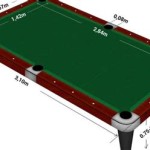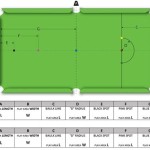Rug Under Dining Room Table: Yes or No?
The question of whether to place a rug under a dining room table is a common design dilemma. A rug can significantly enhance the aesthetics and functionality of a dining space, but it's crucial to consider several factors before making a decision. This article explores the pros and cons of using a rug under a dining table, offering guidance to help homeowners make the best choice for their needs.
Benefits of a Rug Under the Dining Table
Rugs offer a range of advantages in a dining room setting, contributing to both the visual appeal and practicality of the space.
- Anchors the Dining Area: In open-plan layouts, a rug visually defines the dining area, separating it from adjacent living spaces and creating a sense of cohesion.
- Adds Warmth and Comfort: Rugs introduce a layer of softness underfoot, making the dining area feel more inviting and comfortable, especially on hard flooring.
- Reduces Noise: Rugs absorb sound, minimizing the clatter of chairs and dishes, creating a more peaceful dining experience.
- Protects Flooring: A rug acts as a protective barrier against scratches and scuffs from chairs, spills, and dropped food, preserving the integrity of the underlying flooring.
- Enhances Aesthetics: Rugs add color, pattern, and texture to the dining room, enhancing the overall aesthetic and allowing for personal style expression.
Drawbacks of a Rug Under the Dining Table
While rugs offer numerous benefits, they also present certain challenges that should be carefully considered.
- Cleaning Challenges: Rugs in dining areas are prone to spills and crumbs, requiring regular cleaning and maintenance. Cleaning a large rug can be a laborious task.
- Tripping Hazard: If the rug isn't properly secured, it can create a tripping hazard, especially with chairs constantly being moved in and out.
- Cost: High-quality, durable rugs suitable for dining areas can be expensive, adding a significant cost to the overall room design.
- Visual Clutter: In smaller dining rooms, a large rug can visually overwhelm the space, making it appear smaller and more cluttered.
Choosing the Right Rug
If the decision is made to use a rug, selecting the appropriate size, material, and style is crucial for maximizing its benefits and minimizing potential drawbacks.
- Size and Placement: The rug should extend beyond the table edges by at least 24 inches on all sides to allow chairs to remain on the rug when pulled out. Accurate measurements of the table and chairs are essential for selecting the correct rug size.
- Material: Opt for durable, stain-resistant materials like wool, polypropylene, or synthetic blends designed for high-traffic areas. Flatweave rugs are generally easier to clean than high-pile rugs.
- Pattern and Color: Consider the existing décor and choose a pattern and color that complements the overall style of the dining room. Darker colors and busy patterns tend to hide stains and crumbs more effectively.
Alternatives to Rugs
For those who prefer not to use a rug, several alternative options can provide some of the same benefits.
- Chair Pads: Felt or rubber chair pads placed under chair legs can protect the floor from scratches and reduce noise.
- Area Rugs in Adjacent Spaces: Placing area rugs in nearby living areas can help define different zones within an open-plan layout without the challenges of a rug under the dining table.
- Hard Floor Finishes: Choosing durable, scratch-resistant flooring materials like hardwood or tile can minimize the need for a protective rug.
Maintenance and Care
Maintaining a rug in a dining area requires diligence to keep it clean and in good condition.
- Regular Vacuuming: Vacuum the rug regularly to remove crumbs and debris.
- Prompt Stain Removal: Attend to spills immediately to prevent staining. Blot spills with a clean cloth and avoid rubbing, which can spread the stain.
- Professional Cleaning: Periodic professional cleaning is recommended to remove deep-seated dirt and maintain the rug's appearance.
- Rug Pad: Using a rug pad underneath the rug provides extra cushioning, prevents slipping, and protects both the rug and the floor.
Budget Considerations
The cost of a rug can vary significantly depending on the size, material, and quality. Setting a budget before shopping helps narrow down the options and ensures a cost-effective purchase.
- Material Costs: Natural fibers like wool tend to be more expensive than synthetic materials.
- Size and Shape: Larger rugs and custom shapes generally cost more.
- Quality and Construction: Hand-knotted rugs are typically more expensive than machine-made rugs.

Should You Put A Rug Under Dining Table Furniturebox

What Size Rug Under Dining Table Here S The Best Way To Find Righ

Simple Rules For Dining Room Rugs Floorspace

Rules Of Thumb For Rugs Under Round Dining Tables Inspiration

How To Choose A Family Friendly Dining Room Rug

Simple Rules For Dining Room Rugs Floorspace

How To Choose A Family Friendly Dining Room Rug

Should You Put A Rug Under Dining Table Furniturebox

People Can T Decide Whether Rugs Belong In The Dining Room Or Not

6 Rules For Choosing A Dining Room Rug Pretty Sources Stonegable
Related Posts








